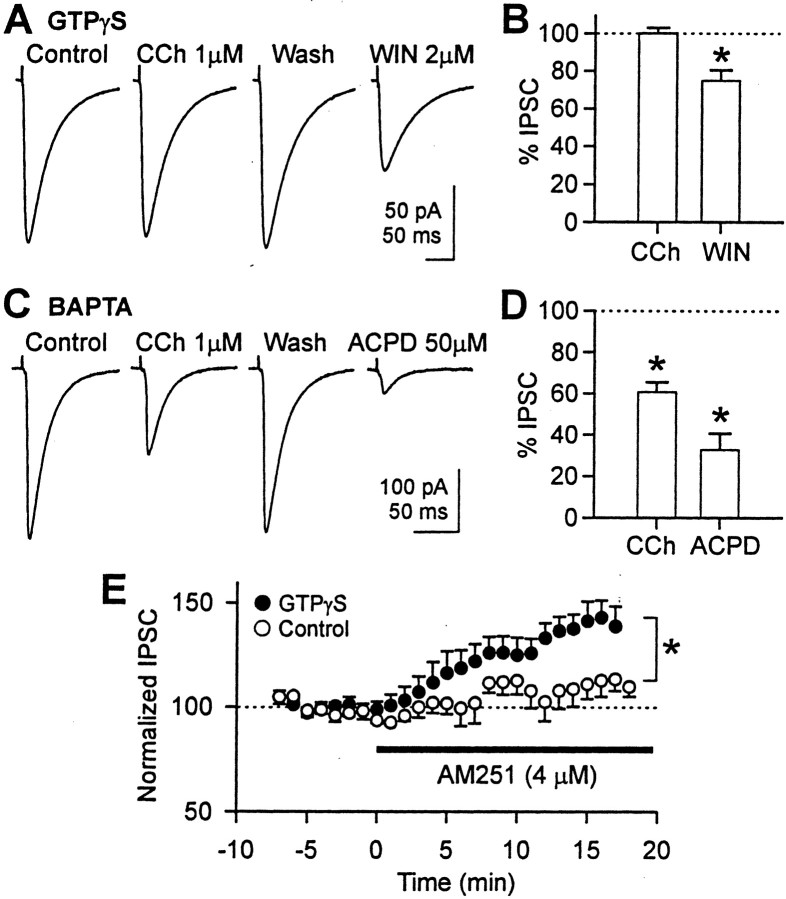Fig. 6.
Effect of CCh on eIPSC amplitude in cells loaded with GTPγS (1 mm) or high BAPTA (35 mm).A, With 1 mm GTPγS inside the postsynaptic cell, CCh (1 μm) did not reduce eIPSC amplitude, but WIN 55212-2 (2 μm) did. In all experiments, WIN 55212-2 was applied in the absence of CCh to prevent confounding of effects. Forty traces were averaged for this cell, and 30–60 traces were averaged for other cells. The stimulus artifacts were partially truncated graphically. We waited for ∼30 min for complete action of GTPγS. DSI had disappeared by this time because of inhibition of the Ca2+ current. B, With 1 mm intracellular GTPγS, 1 μm CCh did not affect eIPSC amplitude (n = 6; pairedt test; p > 0.1), but WIN55212-2 (2 μm) reduced it to 75 ± 6% (n = 5; paired t test; *p < 0.05).C, CCh (1 μm) reduced eIPSC amplitude in a reversible manner in the presence of 35 mm BAPTA inside the postsynaptic cell. In addition, high BAPTA did not prevent 50 μm ACPD from reducing eIPSC. Forty to 50 traces were averaged for this cell, and 40–60 traces were averaged for other cells. DSI was not observed with high BAPTA in either the presence or absence of CCh. D, In cells loaded with 35 mm BAPTA, 1 μm CCh reduced eIPSC amplitude to 61 ± 5% (n = 6; paired ttest; *p < 0.01), and 50 μm ACPD reduced it to 33 ± 8% (n = 5; pairedt test; *p < 0.05).E, In cells loaded with 1 mm GTPγS, AM251 (4 μm) increased eIPSC amplitude (filled circles; n = 5), indicating that GTPγS by itself stimulated endocannabinoid release. At 16 min of AM251 application, eIPSC amplitude was 143 ± 8% of the control amplitude. AM251 was also applied to control cells lacking GTPγS (open circles; n = 5). At 16 min, eIPSC amplitude in these cells was 113 ± 8% of the baseline. Each circle is mean value of five cells after averaging 15 traces (1 min) within a cell. *p < 0.05;t test for 16–17 min.

